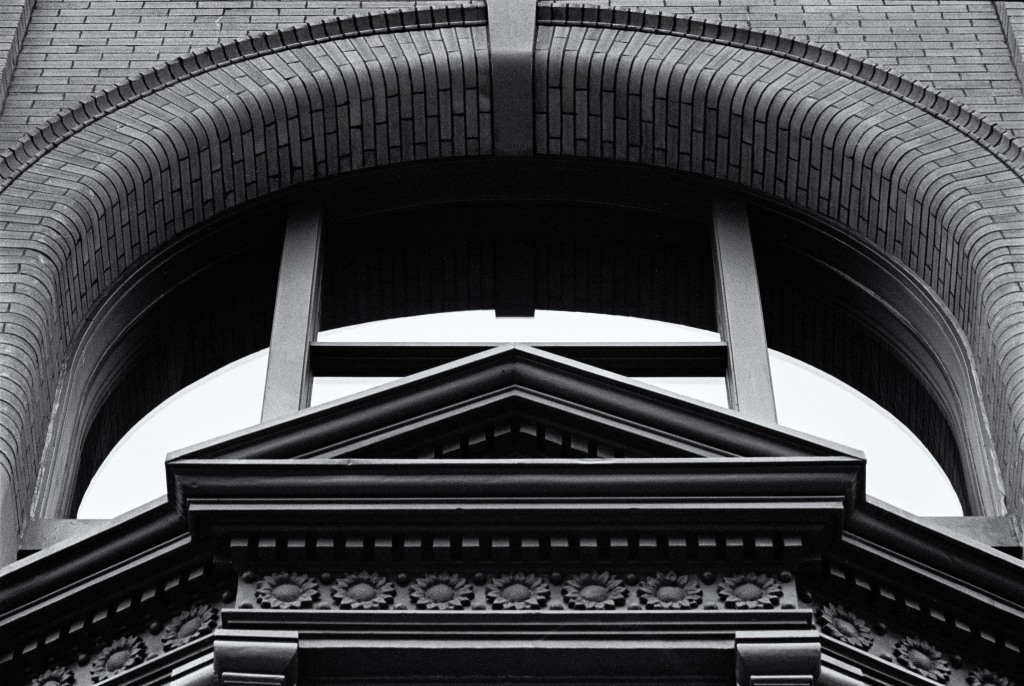#6 in B+W Film Micro Reviews
Many don’t associate heavily overcast dull days as an ideal condition any photographs, as is hard to extrapolate a scene severely lacking of contrast and shadows as something glowing and visually exciting. Yet, with the right film and developer combination developed for high contrast, dull days can result in spectacular photographs.
Kodak Tri-X Pan pushed to ISO800 or possibly 1600 developed in XTol 1+1.5 for 14 minutes results in a fairly extreme contrast boost that compliments dull days. Additionally, compared with other films like HP5, the characteristic curve of Tri-X has a gentle toe and shoulder portion that results in steeper mid-tone contrast. And so, you can expect Tri-X to be punchier than the alternatives.
The first photo is in one of the many colourful back lanes in Montreal. I can’t remember the exact location, but you could start at Pine Ave. W in between Clark St. and St. Laurent and find such back lanes (that run parallel with St. Laurent). Again, an incredibly dark day developed to high contrast makes this scene glow.
Next, a Mini in Old Montreal on the same really dull day. Normally, when pushing film, shadow detail is lost. But, under such low contrast settings, shadows are generally not so deep that they fall into complete darkness.
In the example below, the ISO1600 was used. Compared to the prior examples at ISO800, there is a notable loss in shadow detail. The top of the window is completely black and devoid of detail (including the negative itself). Such blackness can work in some cases – but not always. It is something to keep in mind when choosing the ISO.

Bottom line – this is a stunning combination for dull days. Typical of Tri-X, sharpness is fine and the quality of grain is what we shoot film for.
For photos in this post, exposure and processing information is given below:
| Film | Kodak Tri-X |
| ISO | 800 & 1600 (with reduced shadow detail) |
| Developer | XTol |
| Dilution | 1+1.5 (one part stock solution, 1.5 parts water) |
| Time | 14 minutes |
| Temperature | 20C, 68F |
| Agitation | 5 seconds each minute |
| Digitization | Scanned with Plustek 8200i, processed in Lightroom and Nik Silver Efex Pro |
















